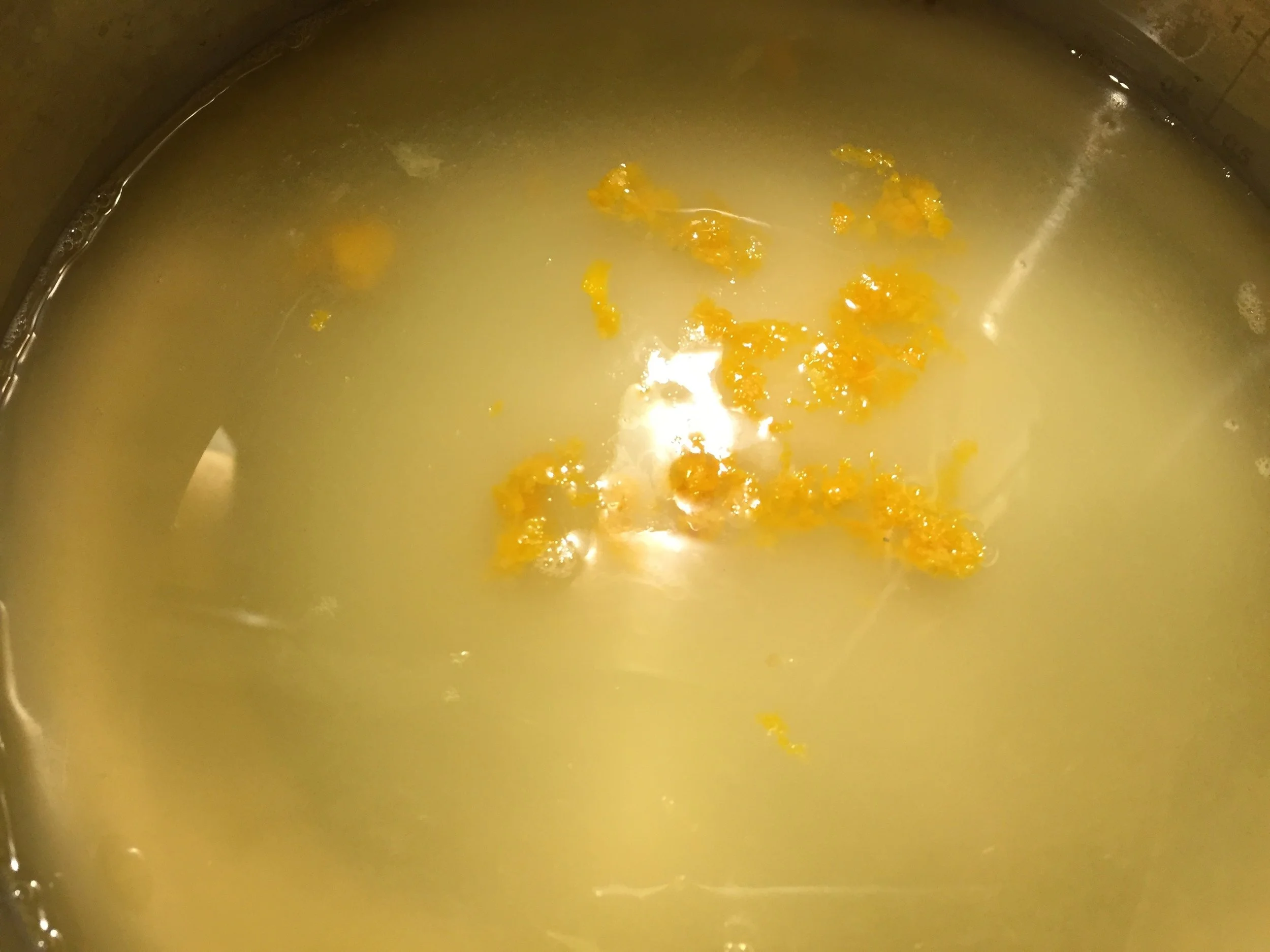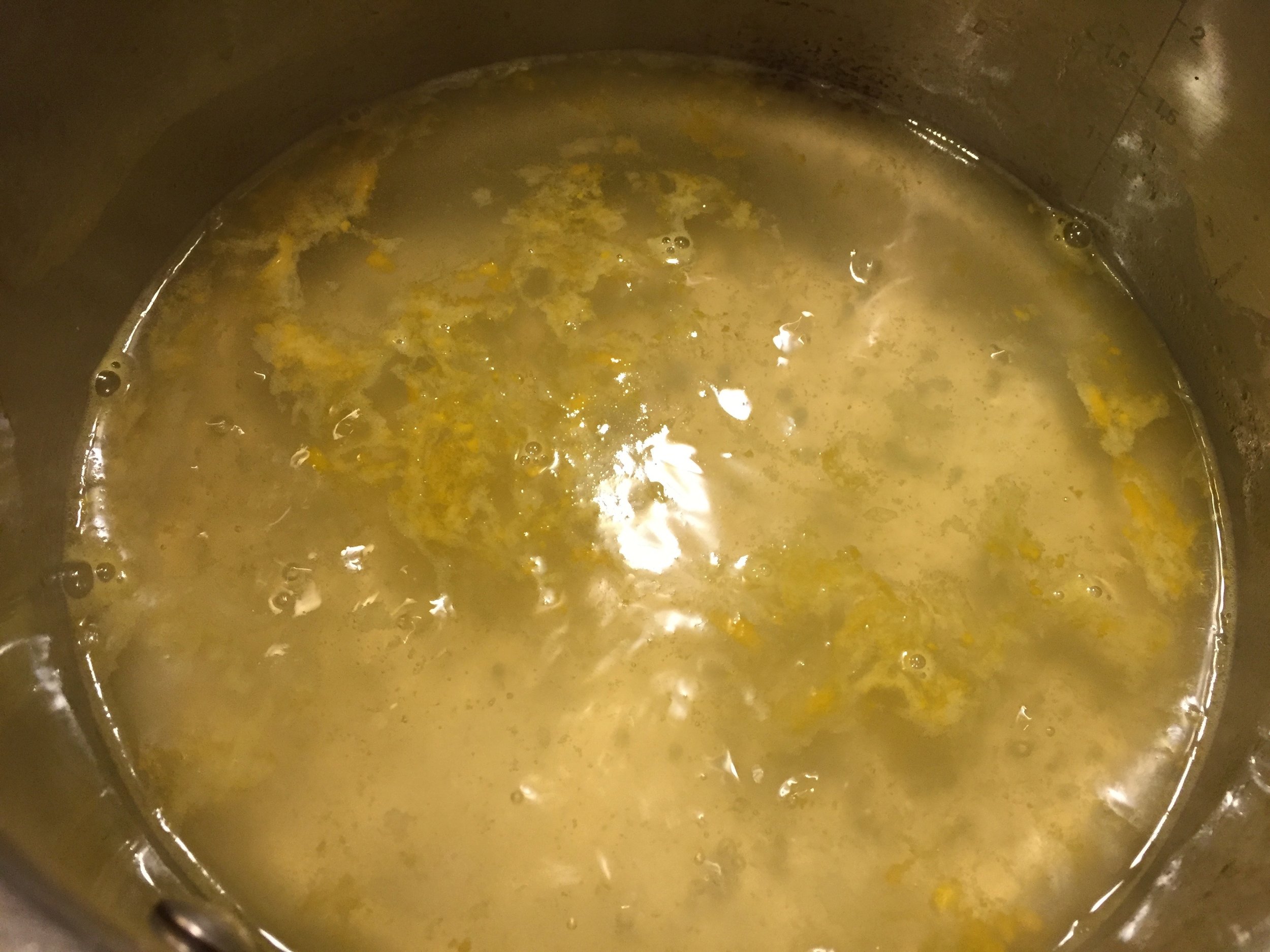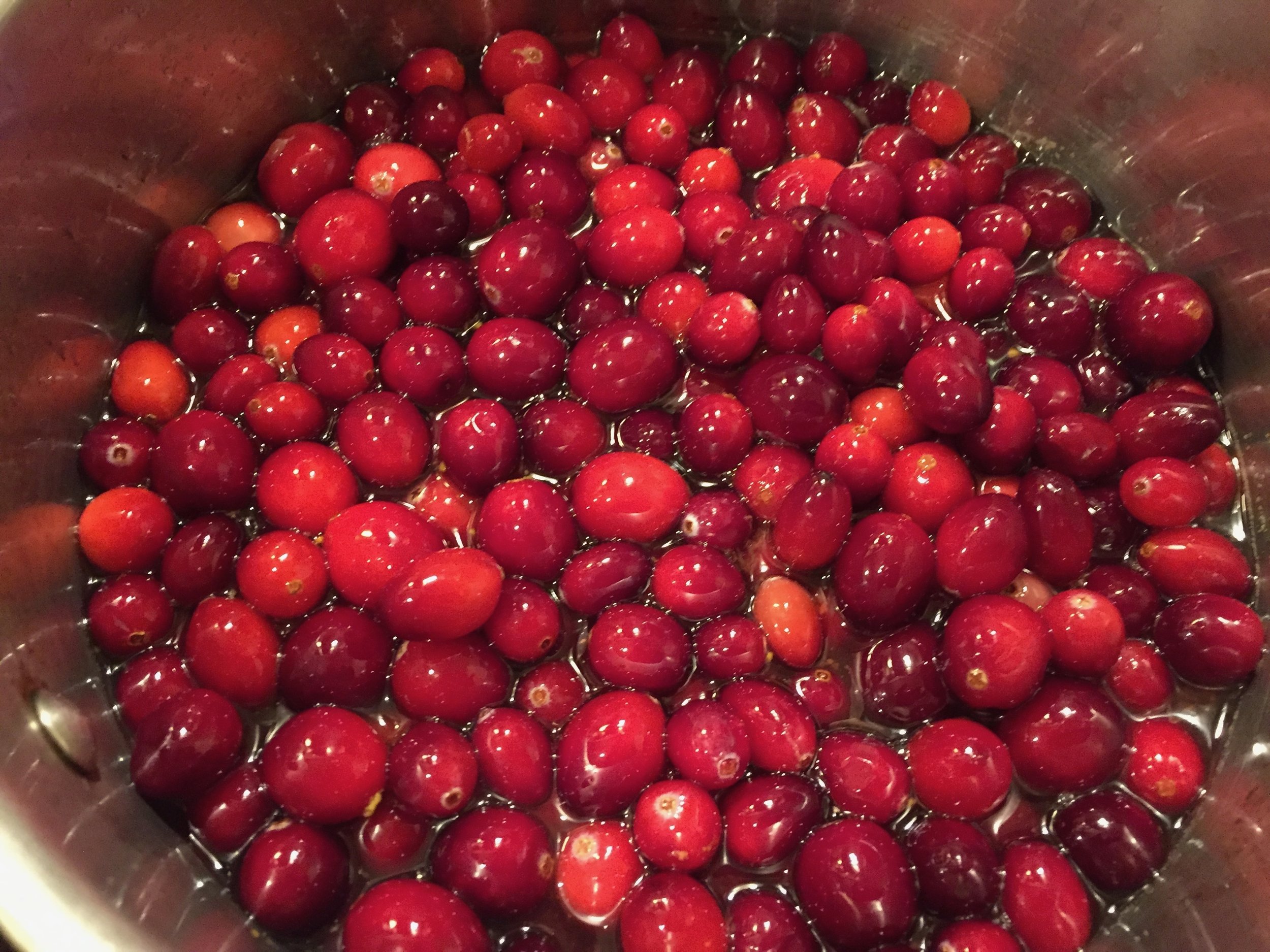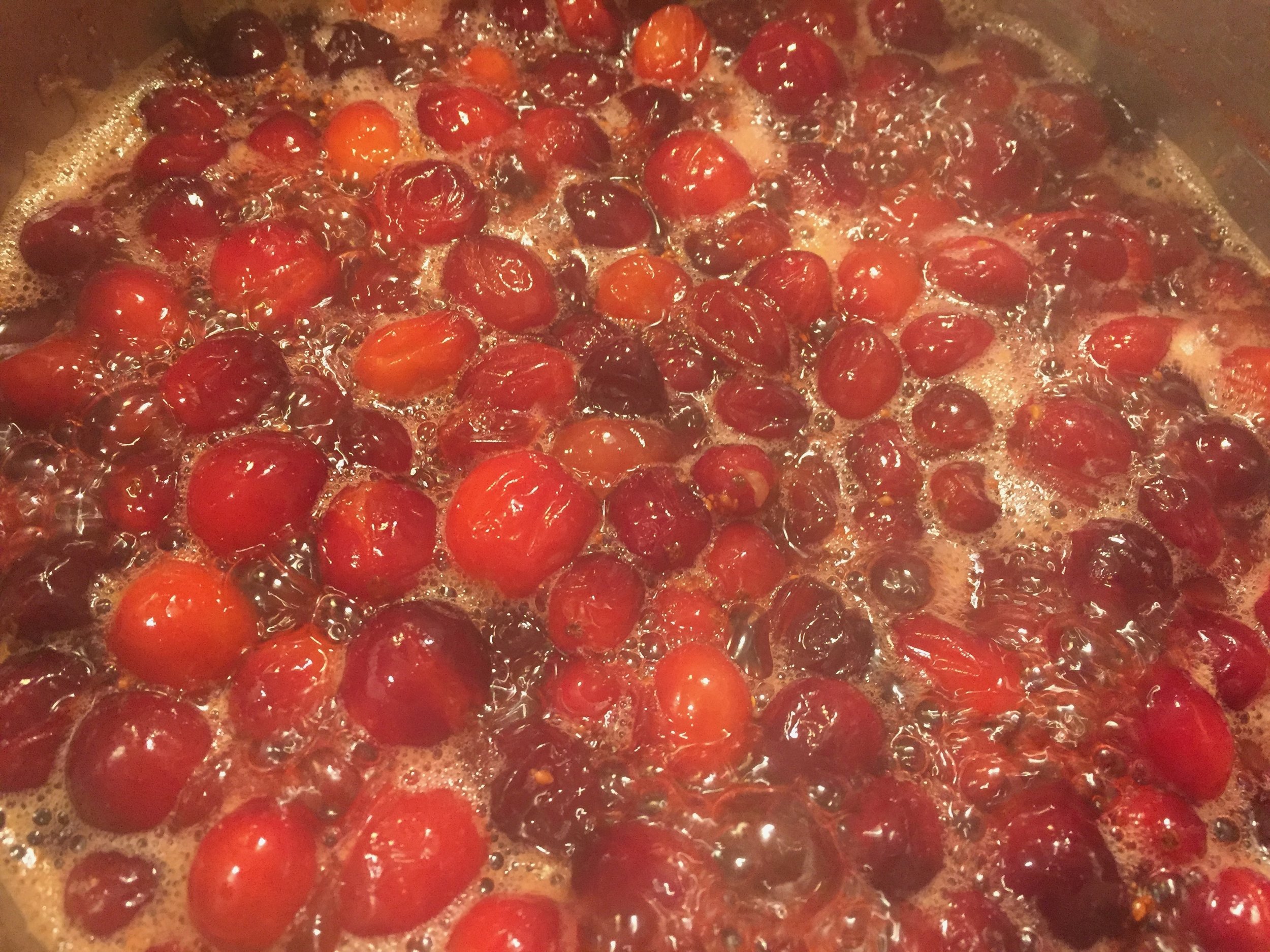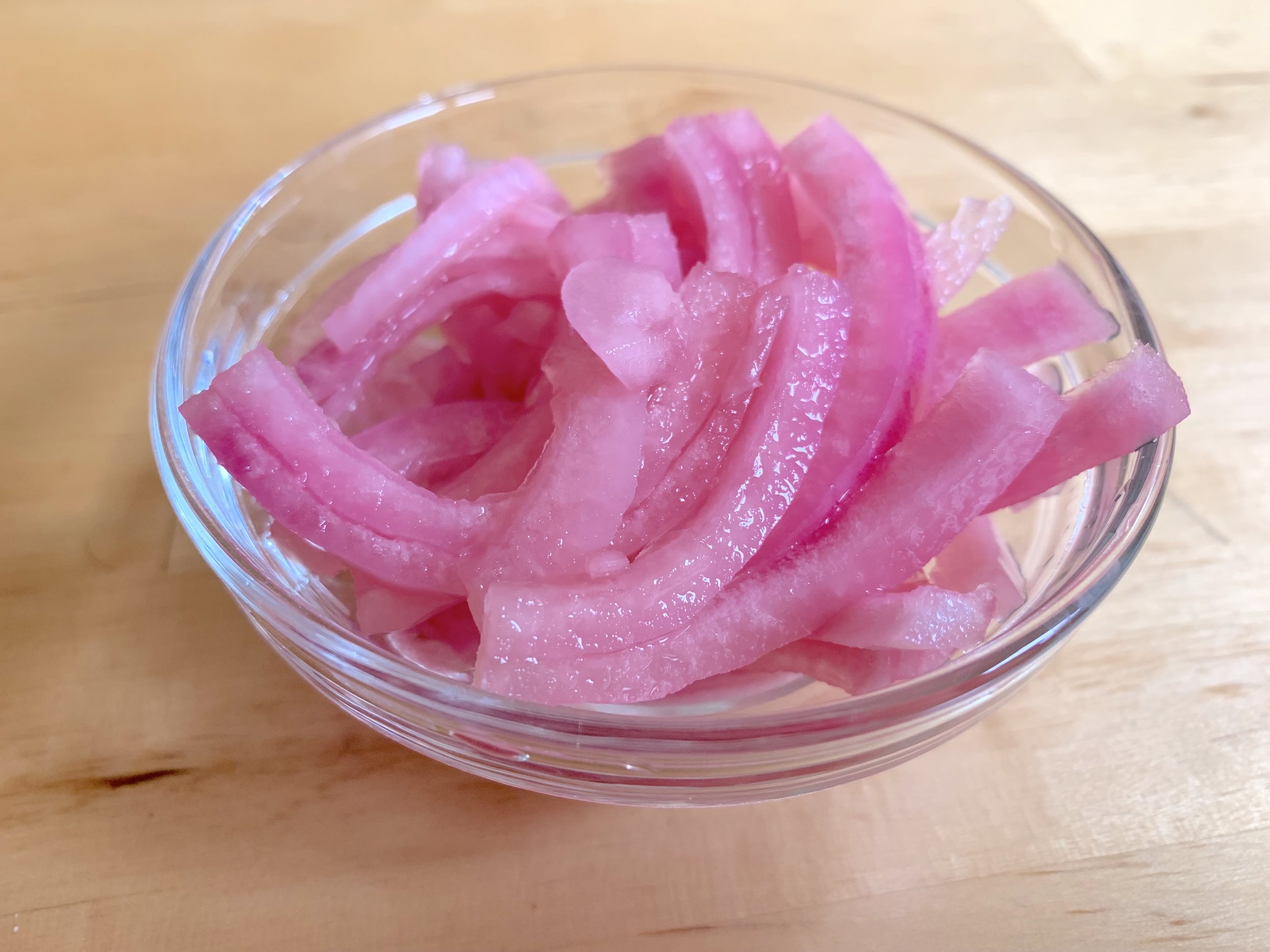Cranberry Sauce
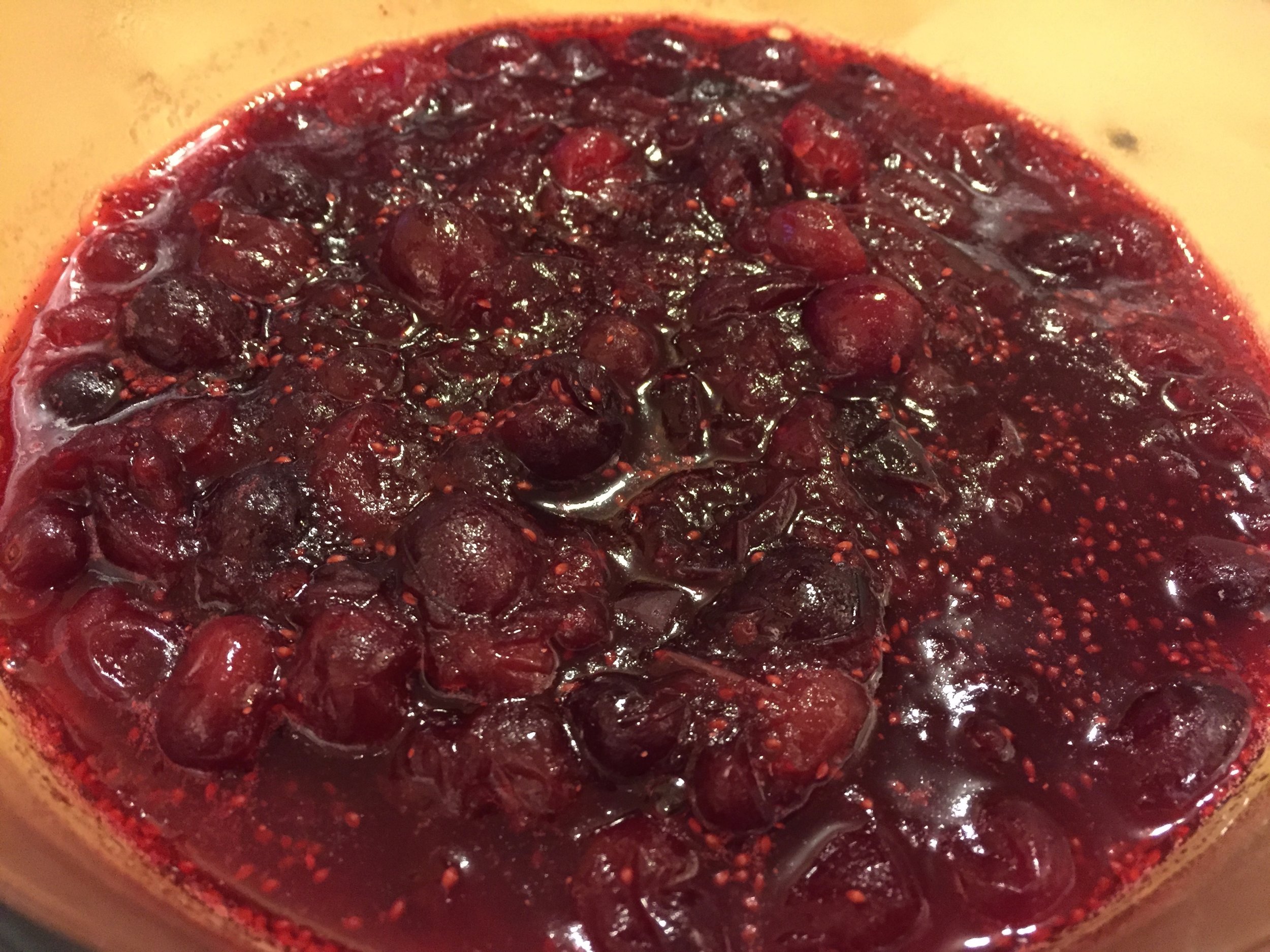
Small, tart berries found in bogs in cool regions of North America, cranberries formed an important part of the diet of many Native American tribes, including the Narraganset people of what is today New England. The fruit was integrated into the diets of early European settlers, partly because the berry’s high Vitamin C content helped prevent scurvy.[1] Now one of only three native North American fruits to be commercially cultivated, cranberries have become a staple holiday food in both America and the United Kingdom, often served on Thanksgiving or Christmas.[2] Cranberry sauce is a simple recipe to make at home, and can be held in the refrigerator for several days.
Ingredients
16 oz cranberries
1 orange
½ cup sugar
Before we start cooking, a quick word on sourcing cranberries. Either fresh or frozen cranberries work for this recipe. Depending on how far you live from the nearest cranberry farm, the frozen berries may be of higher quality than their fresh brethren. Cranberries are grown in bogs, and the simplest way to harvest a bog of cranberries is to flood the area. The berries float to the surface, and can be collected easily from there. After harvesting, this water gets drained into local waterways.
Industrial farming of cranberries (Ocean Spray in particular, whose consortium controls approximately 70% of world cranberry production) utilizes high concentrations of pesticides and fertilizer. Besides being a potential health concern, these chemicals get released into the local ecosystem in incredible quantities when the water used for harvesting is drained.
Because cranberry bogs are considered farms, this contaminated water (about a million gallons per acre) is legally classified as runoff, and is therefore not subject to the Clean Water Act. Industrial cranberry operations have contributed greatly to the destruction of wetlands in the United States, and have triggered algal blooms, with serious consequences for littoral ecosystems already under threat.[3] Therefore, if possible, I would strongly encourage you to find and purchase organic cranberries for your holiday needs.
We begin our sauce by zesting and juicing an orange. When zesting, it is important to avoid the white pith, which is bitter. A medium orange should yield about a third to half a cup of orange juice. In a saucepan, combine the juice with one cup of water, half a cup of sugar, and the orange zest, and bring to a gentle simmer, stirring until the sugar is dissolved.
Once the sugar is dissolved, add the cranberries to the saucepan, stirring gently. Bring to a gentle simmer and cook the sauce down. The cranberries will begin to soften and burst, releasing the large amount of pectin the berries contain and thickening the sauce. Stir occasionally as the sauce thickens, which should take about 20 minutes. As the sauce gets thicker, control the heat carefully to avoid bubbles and spitting. Once the sauce is cooked down, remove from heat. Allow the cranberry sauce to cool and set slightly before serving, either warm or chilled.
Substitutions
This sauce is less sweet than most pre-made cranberry sauces. If you prefer a sweeter sauce, increase the amount of sugar in the recipe to your liking. If you prefer a smoother sauce, use a blender or immersion blender to blend the sauce to the desired texture.
If you don’t like orange in your cranberry sauce, you can omit the juice and zest and simply add another half a cup of water. Other optional flavors that work well in cranberry sauce include lemon zest, rosemary, cinnamon, nutmeg, and allspice. If you are interested in a less traditional sauce which contains other fruits, raisins, apples, blueberries, and cherries all can work with this recipe. Simply add the fruit to the sauce together with the cranberries.
[1] The Narraganset people called these berries sasemineash. The word “cranberry” is borrowed from the German “kraanbere,” meaning “crane berry.” This is because early German and Dutch colonists in New England felt the cranberry flower bore a resemblance to the head of a crane.
[2] The two other commercially cultivated North American fruits are Concord grapes and blueberries.
[3] References for pollution from cranberry farming: Article #1, Article #2.
Hanson et al., Irrigation Return Flow or Discrete Discharge? Why Water Pollution From Cranberry Bogs Should Fall Within the Clean Water Act’s NPDES Program, Environmental Law Review, 2007.
Recipe
Prep Time: 5 min Cook Time: 20 min Total Time: 25 min
Difficulty: 1/5
Heat Sources: 1 burner
Equipment: zester, saucepan
Servings: 12
Ingredients
16 oz cranberries
1 orange
½ cup sugar
Instructions
1. Zest the orange and squeeze out the juice.
2. Combine the juice, zest, sugar, and 1 cup of water in a saucepan, and bring to a simmer over medium heat, stirring until the sugar is dissolved.
3. Add the cranberries to the saucepan, and simmer until the berries soften and the sauce thickens, about 20 minutes.
4. Cool and serve.


